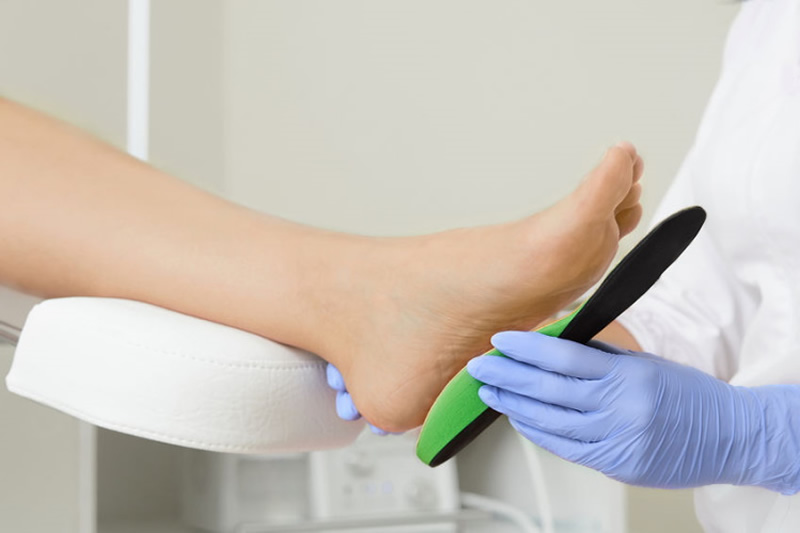
- Research Name Foot or Ankle Sprain or Fracture
- Patient Anonymous Patient
- Doctor Dr. Babajide A. Ogunlana
- Category Sport Medicine
- Date 12th May 2020
- Location Missouri City, Texas
- Call Us 281-778-5560
Foot or Ankle Strain or Fracture
The feet and ankles work together to provide support and mobility to the body. A foot or ankle sprain is a soft tissue injury. Most often, a sprain occurs when an injury pulls, stretches, or tears the ligaments that connect bone to bone. A fracture is actually a break in the bone.
Causes
Injuries are the most common causes of foot and ankle sprains and fractures. Many fractures and sprains occur during sports. Football players are particularly vulnerable to foot and ankle sprains and fractures. Basketball players are prone to ankle sprains, and runners may develop stress fractures of the ankle or foot. Gymnasts and dancers may also develop stress fractures.
Tripping or stumbling on uneven ground is another common cause of foot and ankle sprains and fractures.
Symptoms
Pain, swelling, bruising, and difficulty walking on the affected foot or ankle are the most common symptoms of a sprained or fractured foot or ankle.
Home Care
If you’ve hurt your foot or ankle, it’s best to err on the side of caution. The acronym RICE can help you remember what to do:
Rest—Rest the affected area. Stay off the injured foot or ankle until it can be fully evaluated. Walking, running, or playing sports on an injured foot or ankle may make the injury worse.
Ice—Apply ice to the affected area as soon as possible, and reapply it for 15–20 minutes every three or four hours for the first 48 hours after injury. Ice can decrease inflammation.
Compression—Wrap an elastic bandage (such as an Ace® wrap) around the affected foot or ankle. The wrapping should be snug, but not so tight as to cut off circulation.
Elevation—Elevate the affected extremity on a couple of pillows; ideally, your foot or ankle should be higher than your heart. Keeping your foot or ankle elevated also decreases swelling.
When to Visit a Podiatrist
Podiatrists are doctors who specialize in the care and treatment of the lower extremities. If you’ve injured your foot or ankle, see a podiatrist. He or she can determine the extent of the injury and develop a plan of care to get you back in the game (or back to your everyday life) as soon as possible.
Increased pain, swelling, bruising, redness, or difficulty walking after an injury are definite signs that it’s time to see a podiatrist.
Diagnosis and Treatment
A podiatrist will carefully examine your feet and ankles and take a complete medical history. He or she will also order tests, including an X-ray, ultrasound, or MRI, to determine the extent of your injury. If you have a fracture that’s clearly visible on X-ray, you may not need additional testing. Ultrasounds and MRIs are useful for finding soft issue injuries (including torn ligaments) and stress fractures.
Treatment will depend on your injury. If you have a broken bone, your podiatrist may attempt to “reduce” the fracture, which means lining up the ends of the bones so they can heal properly. (You’ll be given a local anesthetic to numb the area first.) If the fracture is “unstable,” meaning that the ends of the bone do not stay in place after a reduction, surgery may be needed. Podiatrists can use metal plates and screws to fix broken bones.
Stress fractures are treated with rest and immobilization. You will be instructed to stay off the affected area until healing is complete. Crutches and/or a special “boot” or cast may be used to immobilize the area.
Sprains are also treated with a period of immobilization. Depending on the extent of your sprain, you may be able to resume activity fairly quickly, or you may need to wear a soft cast or special “boot” and use crutches for a period of weeks.
Professional athletes may undergo surgery to repair torn ligaments.
Oral anti-inflammatory medication, such as ibuprofen, can be used to decrease pain, swelling, and inflammation.
Prevention
Warming up prior to physical activity can prevent ankle sprains and fractures. So can wearing proper shoes. If you’re an athlete, talk to your podiatrist to determine which shoes are best for your sport, and read APMA’s footwear selection tips on our Tips for Healthy Feet page for more information. Athletic shoes should be replaced yearly; running shoes should be replaced every 300–400 miles or so.
Avoid running or walking on uneven surfaces.



